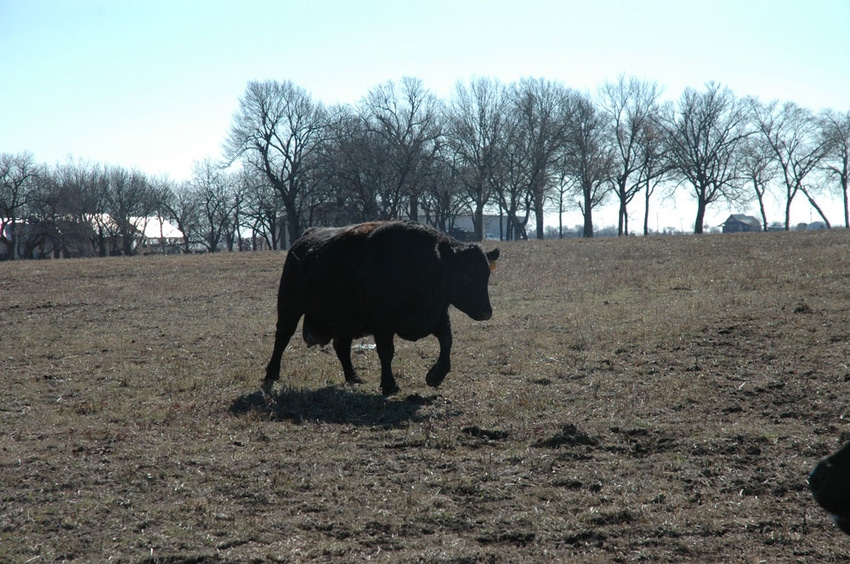
Officials at the Texas Animal Health Commission say USDA is releasing 23,478 acres from its temporary cattle fever tick quarantine zone in Starr County effective immediately. The zone is one of four cattle fever tick areas in that county placed in temporary quarantine since 2007.
Since 1906, federal regulations have authorized both permanent and temporary quarantine areas to control cattle fever tick disease. In contemporary times, permanent quarantines for a thin stretch of property located along the U.S./Mexico border in eight South Texas counties have been under quarantine. This quarantine area includes a thin strip of property ranging between a few hundred yards up to five miles wide.
But four additional areas in Starr County were added to the temporary quarantine zone in 2007 after escalating case numbers of parasite infections were reported on South Texas ranches.
Cattle fever ticks are capable of carrying and transmitting ‘babesia,’ a blood parasite deadly to cattle. Although the ticks were practically eradicated from the U.S. in 1943, USDA says the vigilance against the pest cannot end, due to its existence in Mexico.
Previously released areas from the temporary preventive fever tick quarantine area (TPQA) in Starr County consisted of 42,111 acres released on November 2, 2011, followed by 45,969 acres released on December 21, 2011. The release of this portion of the Starr County temporary quarantine area (TPQA) rescinds all movement restrictions placed on the livestock and wildlife within the 23,000-plus acres. Only one small area (33,000 acres) in Starr County now remains under temporary quarantine.
Limitations placed on quarantined areas
Livestock moved from the permanent quarantine zone must be individually inspected by USDA or TAHC inspectors, treated and permitted to leave the zone. More problematic, however, is wildlife movement. Deer, elk, nilgai and other species of captive or free-ranging wildlife can host the tick, moving it from pasture to pasture. Regardless if they are moved by inappropriate livestock movement or wildlife, sporadic cattle fever
tick incursions occur, requiring producers and state and federal animal health agencies to take aggressive actions, such as temporary preventive quarantines, to prevent the spread of the potentially deadly pest. In 1973, the largest outbreak occurred, with 170 tick-infested premises detected in Texas.
"Releasing another area in the TPQA continues to confirm that the cooperative efforts between the USDA-Veterinary Services Tick Force, TAHC, the Texas cattle industry and local land owners, are working successfully," said Dr. Dee Ellis, TAHC Executive Director and State Veterinarian. "The TAHC and USDA will continue to work closely with local landowners to maintain an effective surveillance program so that fever ticks do not reoccur in the area."
A USDA Animal and Plant Health Inspection Service (USDA-APHIS) team is permanently assigned to provide mounted patrols to a 400-plus mile strip of land reaching from the mouth of the Rio Grande River north to Amistad Reservoir near Del Rio, an estimated 150,000-acre area where a permanent livestock quarantine is being enforced as part of the Cattle Fever Tick Eradication Program (CFTEP). These troops are officially known as mounted patrol inspectors, but are known along the border as “tick riders.”
The day starts early for the tick riders. Rising before the sun is up, they ride the river banks in search of stray cows that may have wandered out of Mexico and across shallow crossings on the river. They watch for things that don’t fit, like unfamiliar tracks on the trail and an unbranded cow in a herd of registered cattle. They search for signs of stray or smuggled animals, and when they find them, they are required to rope and inspect the strays and spray them on the spot. They are then driven to special dipping vats where a "tickicide solution" disinfects the animals.
The team consists of specially trained inspectors who ride on horseback in search of stray animals. All of them are experienced riders.
“What we need for this program are good cowboys. That’s what our tick riders are, that and more. We can teach them the other stuff, but we can’t make a cowboy out of them,” says Ed Bowers, Director of Field Operations for the CFTEP and former inspector for 20 years.
“Keeping cattle fever ticks eradicated from the United States, and thus keeping the national cattle herd free of cattle fever, is a current and critical agricultural biosecurity issue of national importance,” adds Dr. Mathew Pound, entomologist at USDA’s Knipling-Bushland U.S. Livestock Insects Research Laboratory in Kerrville, Texas, who plays an active role in research and development of new technology designed to help fight the cattle fever war.
For more information about the cattle fever tick, visit the TAHC web site at
http://www.tahc.state.tx.us/animal_health/fevertick/fevertick.html.
About the Author(s)
You May Also Like




